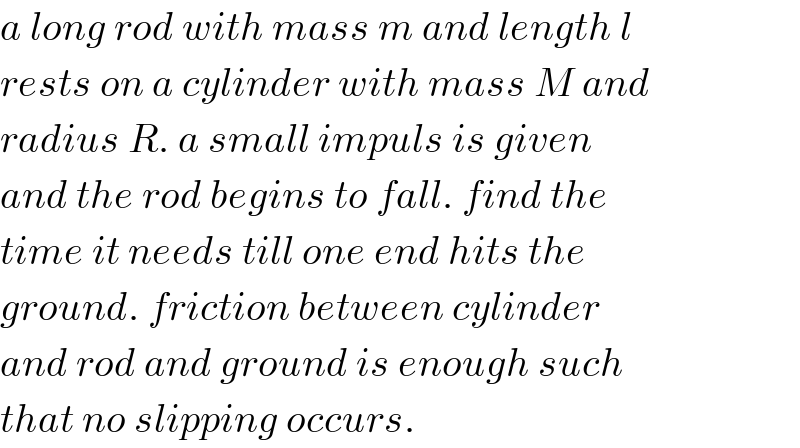
Question and Answers Forum
Question Number 91167 by mr W last updated on 28/Apr/20

Commented by mr W last updated on 28/Apr/20

Commented by mr W last updated on 28/Apr/20

Commented by jagoll last updated on 28/Apr/20

Commented by ajfour last updated on 29/Apr/20

Answered by mr W last updated on 28/Apr/20

Commented by mr W last updated on 29/Apr/20
![rotation of cylinder ϕ rotation of rod θ OC=Rϕ PS=R(ϕ−θ) rod hits the ground if [(l/2)+R(ϕ−θ)]tan (θ/2)=R x_S =Rϕ+R sin θ+R(ϕ−θ)cos θ y_S =R cos θ−R(ϕ−θ)sin θ v_(Sx) =R[(dϕ/dt)+cos θ(dθ/dt)+((dϕ/dt)−(dθ/dt))cos θ−(ϕ−θ)sin θ(dθ/dt)] v_(Sx) =R[(dϕ/dt)(1+cos θ)−(ϕ−θ)sin θ(dθ/dt)]](Q91257.png)
